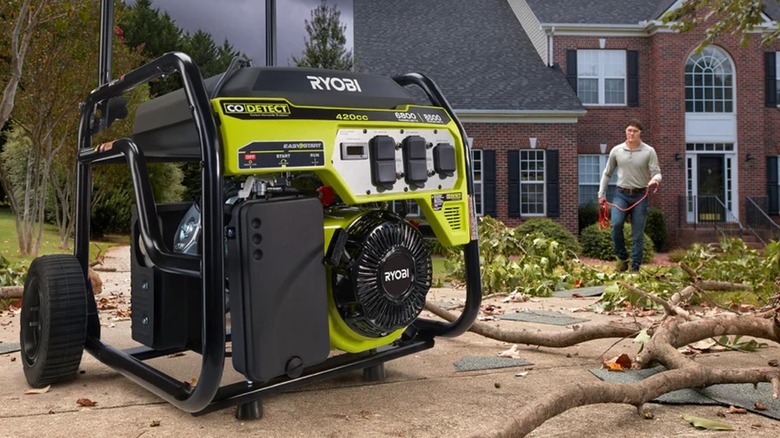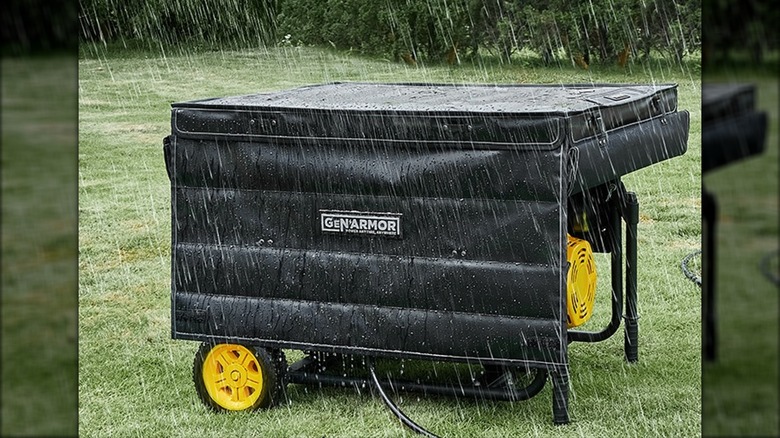Can A Ryobi Generator Get Wet? What You Need To Know Before Running It In The Rain
We may receive a commission on purchases made from links.
In 2024, a total of five major hurricanes struck the continental U.S., with a few of them reaching a category 3 or more. Powerful storms can produce extreme wind speeds, colossal amounts of precipitation, and cause widespread power outages, among many other hazards.
Fortunately, portable generators exist to help support homes during emergencies, right? Yes, and Ryobi generators offer a wide range of features and capabilities to best fit your needs. But these units are not designed to get wet. In fact, the manual for the Ryobi 6500-Watt generator, for example, clearly states that you are not to use it in any type of wet weather. Just imagine, if water gets into the plug outlets or makes its way inside the unit, you could be dealing with deadly voltage or even an explosion in extreme cases. This isn't the only danger either, as you can't run a generator inside any enclosed space such as a garage, due to carbon monoxide poisoning.
So, if you need to use a portable generator like those offered by Ryobi, but it can't get wet, and you can't run it inside the garage, what then? There is a proper way to operate a generator during a rainstorm if necessary, but it involves preparation, a generator cover, and a weatherproof power cable. Once suitably set up to account for rain, you'd be surprised what Ryobi's 6500-watt generator can power and how long it runs on a full tank.
A proper outdoor area, and weather protection
The first step in safely operating a generator during inclement weather is finding the ideal location. You'll need level ground that is a minimum of 20 feet from your home, with the unit's exhaust facing away from the structure. This location needs to remain dry and not be subject to ponding rainwater, as this would be an electrocution risk.
Next, you'll need a generator cover, which protects the unit from rain, but also allows the engine to breathe, and doesn't block the exhaust. These covers come in many varieties with prices ranging from $29.99 for a DRONIRING Generator Cover up to more than $200 for a GenTent XL Generator Running Cover. Not every cover fits every generator, so you'll need to ensure the product is compatible with your unit. Keep in mind that while a cover will protect from rain, strong wind could potentially blow the cover off. In cases where intense gusts are sweeping through your area, it's best to wait until the weather has subsided before setting up your generator.
Lastly, you'll need an extension cord that is weatherproof and designed to handle the power from heavy-duty equipment like a generator. For example, the Ryobi 3600-Watt Generator (RY903622VNM) with 4 20-amp outlets, would require something like the Conntek NEMA 5-20 Outdoor Extension Cord 20 Amps, but make sure it's not running through any standing water. Generators aren't the only Ryobi products that could come in handy in an emergency; there are several other tools ideal for those who want to be prepared.

